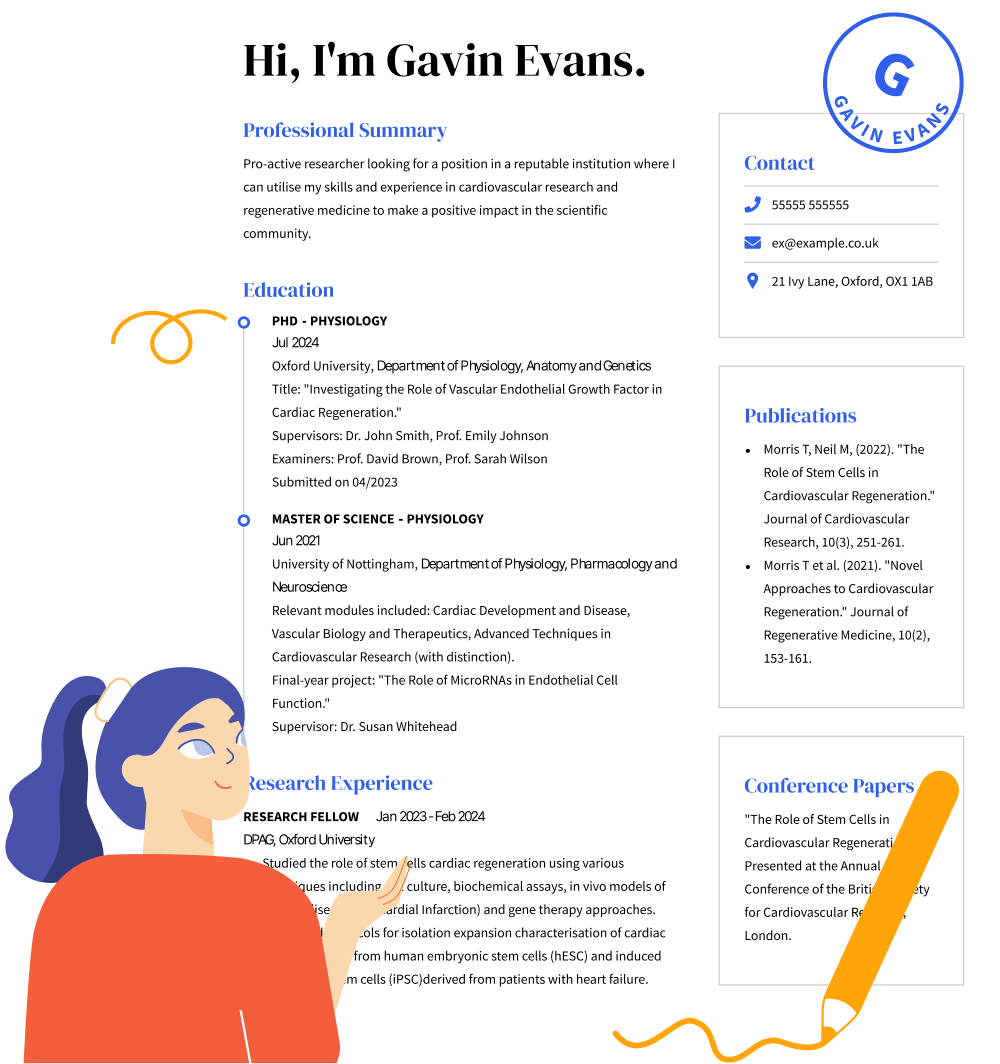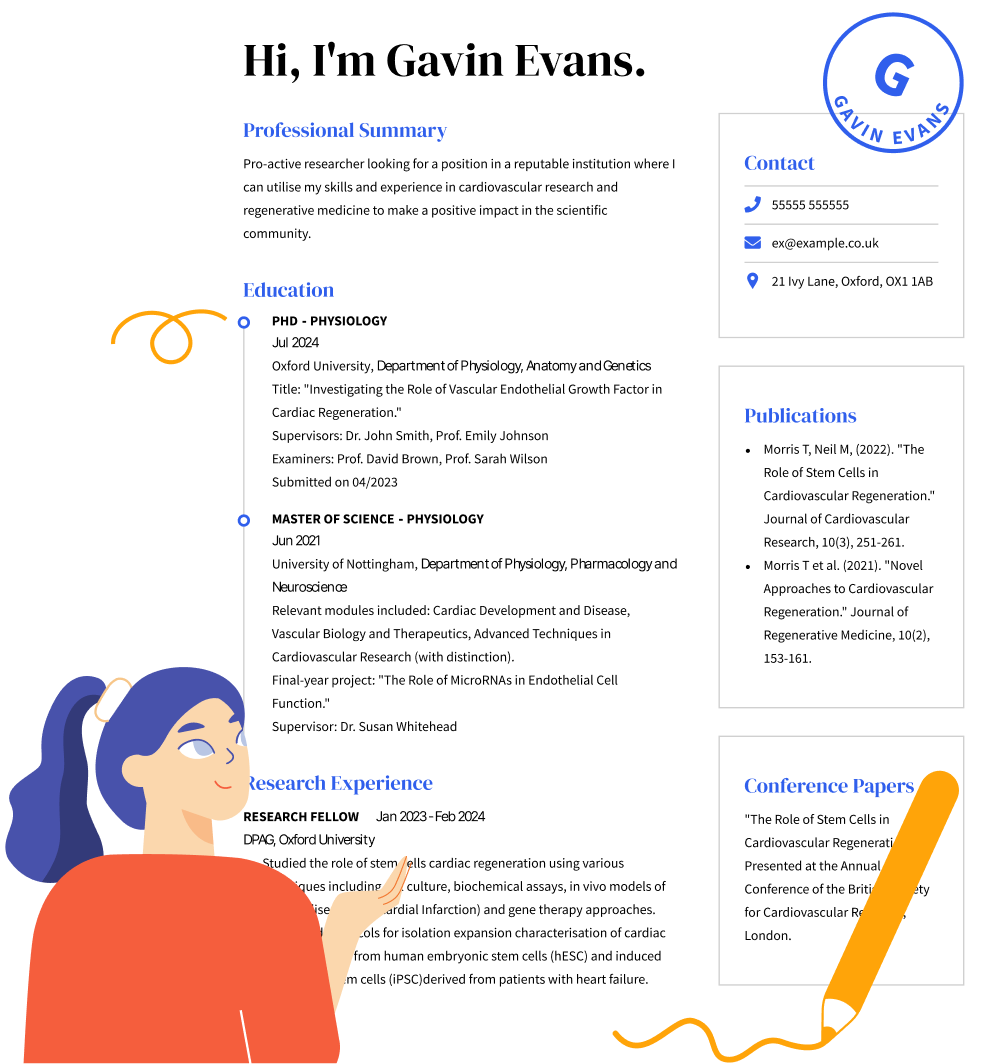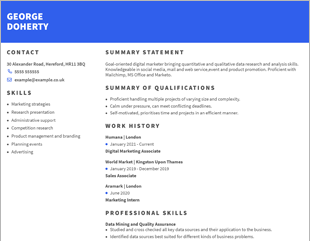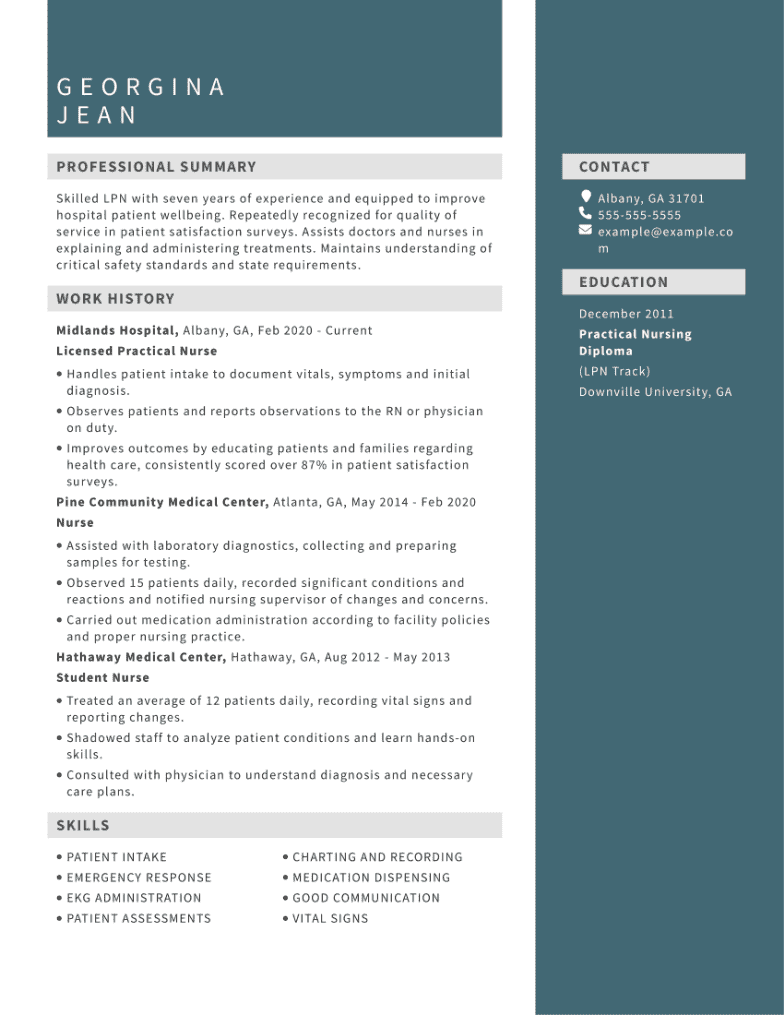Licensed practical nurse CV guide with examples
Highlight your nursing skills by creating a superior licensed practical nurse (LPN) CV with CVHelp.
Highlight your nursing skills by creating a superior licensed practical nurse (LPN) CV with CVHelp.





OUR USERS HAVE BEEN HIRED BY

licensed practical nurses have a critical role in attending to patients in settings such as hospitals and nursing homes. LPNs assist doctors and registered nurses and interact personally with patients, performing tasks such as administering medication, taking vital signs, helping patients to bathe and dress and even conducting IV therapy. LPN job openings can receive hundreds of applications, so knowing how to write a strong CV for an LPN role will help you to get ahead of the competition and land the job you want.
This CV writing guide will show you:
As an LPN, there are a variety of different career paths you can take. You can work as an LPN in a number of different settings, including:
Because LPNs work in such close proximity to patients day to day, hiring managers look for a mix of soft skills and hard skills. Depending on the LPN position in question, hiring managers may be looking for different types of professional experiences and find different certifications to be helpful for the job. In any case, they will want to see a well-written professional CV.
The skills section of your CV is where you can really stand out as a licensed practical nurse. Taking blood pressure or working with catheters requires specialised knowledge you will have acquired in your nursing programme. You may also have technical skills that apply to fields other than nursing, such as using Microsoft programmes like Excel. Emphasise skills you have worked with and perfected in previous jobs if possible.
Even if you don’t have very much work experience or work history, you can use your previous experiences to display how you would be the best fit for the LPN job you are applying for. You can use your internships, volunteering and academic experiences to display your ability to excel as an LPN. Things like organising and maintaining files for an internship can translate to maintaining patient information and treatment plans.
Be sure to include any relevant recognitions or awards you have gotten in your field (e.g., an ANA Distinguished Practise in Nursing award).
The most important certification to have as an LPN is the NCLEX, or National Council Licensure Examination certification. You will need this certification before you can work as a licensed practical nurse. You may also have additional certifications for specialities such as IV therapy, wound care, long-term care, CPR or healthcare quality. Having speciality certifications can benefit you during your job search in a number of ways, including the following:
CV format is crucial when putting together an amazing CV. The best CV for an LPN is often the reverse-chronological CV format. This format will show your most recent job first, followed by the previous one, and so on. This type of format is easy to read and highlights your work experience, skills and achievements. A functional CV is a good choice if you don’t have much professional experience, as it focuses on your skills and qualifications acquired through training.
Five Tips for Creating Your licensed Practical Nurse CV
1.Include a cover letter with your CV. A cover letter will boost your chances of landing an interview. It can also help you fill in any gaps in your work history or explain any other out-of-the-ordinary factors in your CV.
2.Create a strong LPN professional summary or career objective. A good professional summary or career objective can help to highlight your interpersonal skills and catch the eye of a busy hiring manager.
CV sample: An LPN professional summary might look like this.
Caring and detail-oriented licensed practical nurse with four years of experience in a hospital setting delivering high-quality health care. Dedicated to improving the quality of patient care by working as a team with fellow staff. Demonstrated abilities in emergency and intensive care.
3.In the education section of your CV, feature any specialised certifications or training you’ve taken, as these can enhance your competitiveness as an LPN.
4.Quantify your responsibilities and present them as achievements. Use numbers to communicate your value to the hiring manager (e.g., “Treated patients in 100-room hospice care setting”).
5.Keep it simple. Use bullet points and concise phrases instead of lengthy paragraphs. Three to five bullet points per job in your work history is a common number.
To get a job as a licensed practical nurse, you will need to complete an accredited nursing programme. Typically these programmes take about one year to complete and are offered at community colleges, technical schools or hospitals. The prerequisite to entering an LPN programme is a college diploma.
Yes, it is always a good idea to update your CV for every job posting. There are many different types of jobs you can work as an LPN, and altering your CV to more closely match the job description will boost your chances of getting an interview. For example, if you are applying for a job at a paediatric or geriatric facility, you can revise your CV to better display any work you may have done with children or elderly people. This way, when a busy hiring manager is scanning your CV, they will be able to quickly see that your experience or skills match the available job.
The duties and responsibilities you list on your job descriptions on your CV will depend on the scope of your previous jobs. Some duties and responsibilities you may have had as an LPN may be assisting patients with day-to-day activities, monitoring a patient’s condition, taking vital signs, administering medications, providing support for interventions, supervising certified nursing assistants and sterilising medical equipment.
We personalize your experience.
We use cookies in our website to ensure we give you the best experience, get to know our users and deliver better marketing. For this purpose, we may share the information collected with third parties. By clicking “Allow cookies” you give us your consent to use all cookies. If you prefer to manage your cookies click on the “Manage cookies” link below.